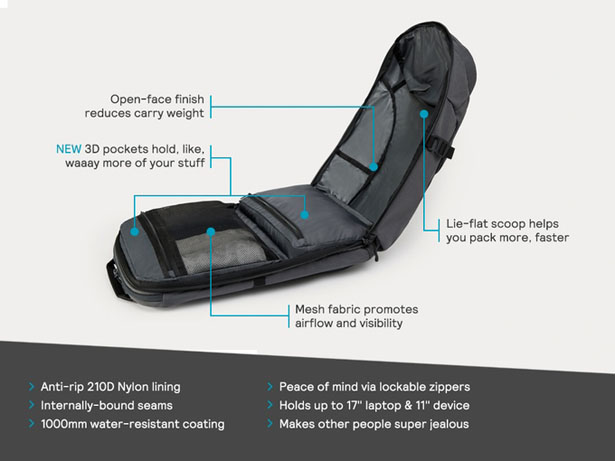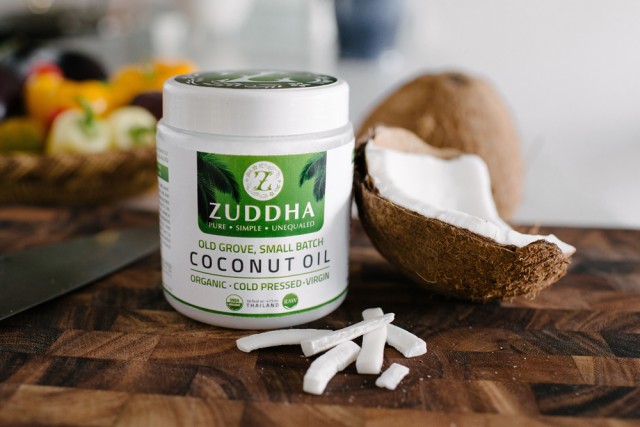“That bag is your girlfriend.”
That’s what the Vietnamese waitress told Jimmy and Doug as she brought them their meal.
It wasn’t the first time she’d seen the prototype bag propped up in its own chair as my friends enjoyed their beers.
The bag had its own chair, because Doug and Jimmy were on a mission for even more feedback. They would proactively show it to travelers and locals and anyone who would stop to ask them what they thought.
It’s that obsession over product quality and listening to feedback from other travelers that has helped Jimmy and Doug raise over $1 million through two wildly popular Kickstarter campaigns.
- Two regular guys from New Zealand.
- Two Kickstarter campaigns (just over two years apart).
- Two products.
- One new travel brand.
- Over a million dollars raised.
In this video interview, Jimmy and Doug reveal how they turned their idea into Minaal, a popular bag company and how they’re turning Minaal from “just” a bag company into a true lifestyle and travel brand.
Before you watch the video, check out Minaal’s amazing second Kickstarter campaign.
It’s ending soon, and it’s your only chance to buy any of their products lower than full price. Even if you don’t need a travel bag, the 24-second intro to their campaign video is priceless.
In the video above, Jimmy and Doug of Minaal share their crowdfunding lessons…
- How they initially met and started Minaal and how it’s evolving from just a bag company to a true lifestyle brand
- How a road-trip adventure across the U.S. in a used van and sleeping in Walmart parking lots inspired the creation of Minaal
- Why the “lightbulb moment” for Minaal wasn’t a single moment, but actually years of frustration
- Why as entrepreneurs, we should be thankful for bad products
- How Jimmy and Doug discovered Kickstarter and decided to use crowdfunding to launch Minaal in 2013
- How two non-product designers (Jimmy says he could only draw stick figures) designed a functional prototype in a few short months
- You can hire out design, but you can’t hire out someone willing to care deeply about the product quality and usability
- Why Minaal was never a “hobby” and was designed as a serious, money-making project from day one
- How Jimmy and Doug see the future vision of Minaal and how they structured the business to achieve their personal entrepreneurial goals (and what’s next)
- How the passionate tribe they’ve built keep Doug and Jimmy going and the role that tribe played in the evolution of the product, the growth of the business and both Kickstarter campaigns
- How Jimmy and Doug found their future customers and then relentlessly ask questions and proactively listen to feedback
- The importance of having a working prototype and using it to gather in-person feedback
- How they prepared for the first campaign, including how they set their initial funding goal, including minimum order quantities, shipping costs and how much they would be willing to “top off” the campaign if they were short
- The critical importance of “scenario planning”, meaning running many different backer scenarios (both good and bad) before you launch
- Why most crowdfunding projects get fulfilled late (and how Minaal planned and prepared to deliver on-time)
- How Minaal structured their pre-launch marketing, including teasing images of the bag on social media
- How they overcame not having a large email list before launching their first campaign (only ~500-1000)
- The importance of focusing on a super specific customer avatar and laser-focus on your specific niche instead of aiming for mass appeal
- How building loads of personal relationships and being part of a community was more important to Minaal’s success than building a large email list
- The importance of a fast start for a Kickstarter campaign and how it can “snowball”
- How Minaal ignored the naysayers and ran a crowdfunding campaign with minimal frustration and angst
- The importance of frequent communication and updates, and why you should tell your backers exactly when you’ll post your next updates
- How Minaal’s first Kickstarter campaign solidified the creation of their passionate tribe
- How that tribe informed the product design process
- Why they weren’t sure their first campaign would work and how increased expectations made them just as nervous for their second campaign
- How they designed the video of their second campaign, balancing entertainment and humor while still highlighting their tribe and their product
- How they made a longer video (4:03) but kept it interesting, using each segment of the video to setup the next segment
- Why they focused on less press outreach and more on email marketing for their second campaign
- How they offered the best early-bird pricing to their existing audience, and offered a special launch notification only to newsletter subscribers
- Why traffic from niche publications (“cash press”) converts to backers much higher than big-name publications (“flash press”)
- Why they never discounts their products, except for pre-selling when they launch new units on Kickstarter
- The importance of finding your community, becoming a part of their story and making them a part of your story
- Why a crowdfunding campaign feels like a 400 meter sprint, but the finish line is really just the beginning
- Doug’s final tip: “Ask lots of questions and ask them as early as possible. Know that things can take a really long time. If you need to pause your campaign to get everything buttoned up, pause it. Don’t launch too soon.”
- Jimmy’s final tip: “Remove your ego from your design feedback process. Don’t lead people with what you think…ask them what they think. Don’t explain away their feedback. Sponge up every single bit and process it later.”


